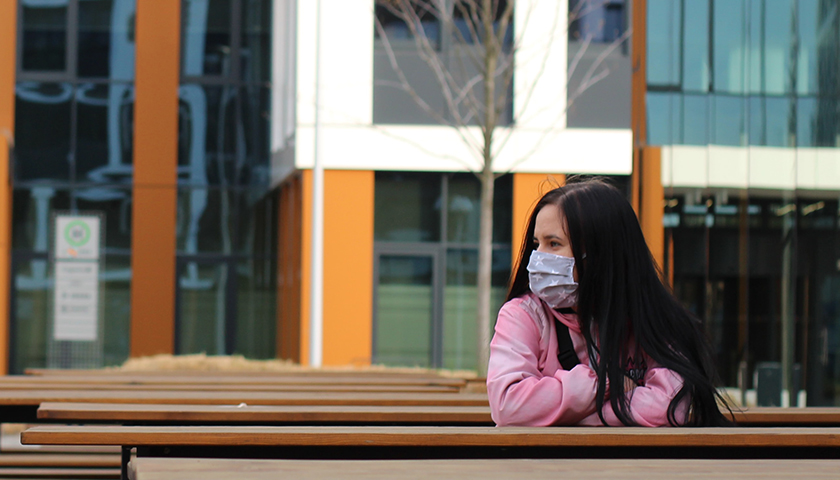One in five Tennessee public school students from across six districts were chronically absent last year during the pandemic. Vanderbilt University’s Tennessee Education Research Alliance (TERA) discovered this during a study of around 150,000 students across about 250 schools. They also discovered that the majority of chronic absenteeism cases occurred among English Learners, minority students, and economically disadvantaged students. The state classifies 10 percent or more of classes missed as chronic absence.
Nowhere did the report mention which six districts were studied. The Tennessee Star asked TERA spokespersons which districts they’d researched. They didn’t respond by press time. TERA noted that these districts’ chronic absenteeism rates have been climbing since 2018, but they’d jumped significantly last year with virtual learning.
Overall, these six districts saw chronic absenteeism jump by 88 percent in elementary schools, 92 percent in middle schools, and 33 percent in high schools. The greatest increases in chronic absenteeism last year occurred with Black and Hispanic students – both economically disadvantaged and not. In the 2019-20 school year, Black and Hispanic students generally had the same amount or less of chronic absenteeism percentile changes when compared to White students.
The report also revealed that student enrollment decreased significantly in the lowest grades. Instead, parents opted for homeschooling or non-public schools. Across the six districts, parents increasingly transferred their children from public to non-public schools by 132 percent. Likewise, parents increasingly transferred their children from public schools to homeschools by 89 percent.
TERA shared that teacher performance wasn’t the issue: nearly all students felt supported, but struggled to be motivated or engaged with virtual learning. 96 percent of students felt their teachers truly cared about them, and 97 percent said their teachers could help them on questions they had. Further, teacher and school official retention rates increased – despite reports of increased responsibilities, insufficient planning time, and burnout concerns.
The report pulled quotes from teachers within each of these six districts to reflect the common issues they’d faced. A frequent theme was the lack of manpower and flexibility – mass amounts of quarantined teachers and virtual learning meant that students with specialized learning needs weren’t assisted properly.
“Teaching students with IEPs [individualized education programs] is difficult in a traditional classroom, and teaching them virtually is next to impossible if they do not have a strong support system at home,” stated one unnamed middle school teacher. “If this method of learning is going to continue, we need to give parents and grandparents the tools to help these kids at home.”
TERA looked at students through their race, ethnicity, economic disadvantage, English Learner status, and disability status. They discovered that English Learners and students with disabilities engaged less frequently in online learning.
Read the full research brief here.
– – –
Corinne Murdock is a reporter at The Tennessee Star and the Star News Network. Follow her latest on Twitter, or email tips to [email protected].






So now we taxpayers are forced to pay for extra classes and “camps” this summer for those who refused to attend classes?
I do not care about the race or ethnicity or economic status of those who elected to skip classes. Equal opportunity was provided. Are the “chronically absent” going to be held accountable by being failed?
I am tired of hearing about how bad the teachers had it. They kept their jobs while tens of thousands lost theirs because of Lee’s unconstitutional actions. What makes them such a privileged class?
Let’s face it, with 6 districts and 250 schools representing 15% of the total students in TN public schools, it isn’t too hard to figure out which ones these are. Lots of inner city. All the undue attention to illegals. I think you will find this list matches exactly the districts that are eligible for the education savings vouchers. Also, the highest per-pupil funding in the state. I would expect this small data set is masking the statewide withdrawals in the other 85% of the state as those with more means (whether income, two parents in household, non-illegals, etc) may seek other education options easier… especially with governor executive orders possibly shutting down their jobs, so one/both parents at home, constant CDC/WHO fear p0rn having them afraid to send children to school. However, unlike these “six districts” they had no option but to foot the bill without the ESV vouchers (like homeschoolers have always done).
Want to see some serious “adverse reactions” to enrollment? Just try to force vaccines without parental consent.
So let me guess … Vanderbilt is going to say that attendance in the mentioned groups will increase if white people will apologize for being racist.